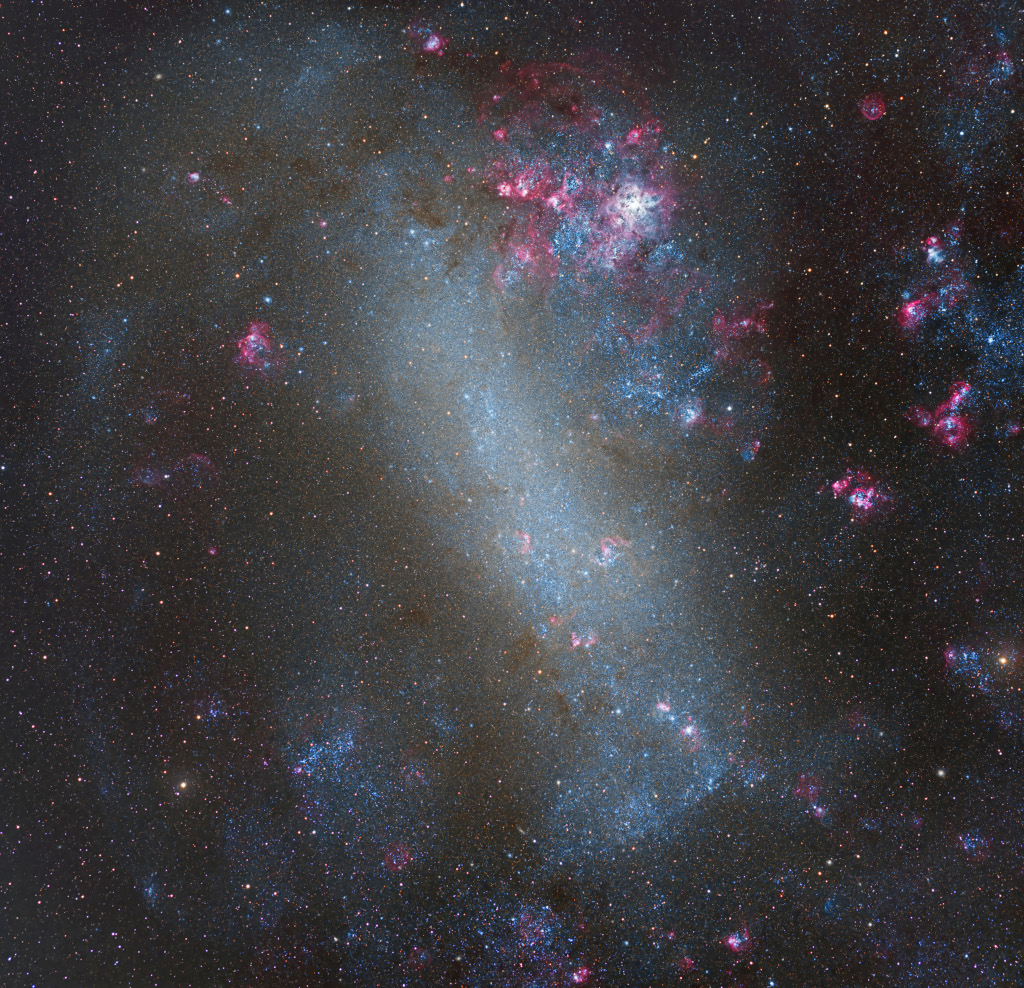2023年9月7日
The Large Cloud of Magellan
Image Credit & Copyright: Chris Willocks
Explanation: The 16th century Portuguese navigator Ferdinand Magellan and his crew had plenty of time to study the southern sky during the first circumnavigation of planet Earth. As a result, two fuzzy cloud-like objects easily visible to southern hemisphere skygazers are known as the Clouds of Magellan, now understood to be satellite galaxies of our much larger, spiral Milky Way galaxy. About 160,000 light-years distant in the constellation Dorado, the Large Magellanic Cloud is seen in this sharp galaxy portrait. Spanning about 15,000 light-years or so, it is the most massive of the Milky Way’s satellite galaxies and is the home of the closest supernova in modern times, SN 1987A. The prominent patch above center is 30 Doradus, also known as the magnificent Tarantula Nebula, a giant star-forming region about 1,000 light-years across.
Tomorrow’s picture: large star factory
大麦哲伦星系
影像提供与版权: Chris Willocks
说明: 16世纪在人类的首次环球航程中,葡萄牙航海家麦哲伦和他的船员,有大把的时间研究南半球的星空。也因此,南半球观星者轻易可见的2个弥漫云雾状天体,即有”麦哲伦星云“之称;如今我们知道这2个星云,其实是我们螺旋状庞大银河系的伴星系。上面这张清晰的影像,所呈现的即为位于剑鱼座方向,距离我们约160,000光年远的大麦哲伦星系。这个跨幅约15,000光年的星系,是银河系质量最大的伴星系,也是近代最邻近超新星SN 1987A发生之处。影像中心上方的醒目的泛红光斑为剑鱼座30,亦名为蜘蛛星云,是个宽约1,000光年的的庞大恒星形成区。
明日的图片: star factory



